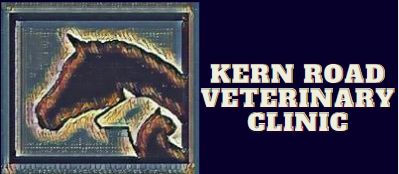Congratulations on your new arrival! Whether this is your first foal or your fiftieth, here is a summary of some helpful information that may answer some of the common questions that arise.
Birth
Parturition or foaling in the mare is a very rapid event. The mare may begin to show signs of restlessness and discomfort for a few hours beforehand, but once the mares water breaks, the foal should be born in 20-30 minutes. There should be progression of the foaling throughout the entire time. The mare may choose to foal lying down or standing up.
1-2-3
1 hour post foaling, the foal should stand.
2 hours post foaling, the foal should nurse.
3 hours post foaling, the mare should pass her placenta.
If events are not following this timetable, call your veterinarian.
Newborn foals will nurse in short bouts, several times every hour. After the first few days, the foal will nurse longer, but less frequently.
Newborn foals sleep a lot, but they are easily roused and get up often to nurse.
Normal Values (foals up to 2 months)
Temperature: 99F -102F
Heart Rate: 60-100 beats per minute
Respiratory Rate: 24-60 breaths per minute
Things to do!
Day 1:
Have the foal checked by your veterinarian in the 1st 12-24 hours of life, if it is not needed sooner. At this time, a thorough medical exam will be performed and an enema will be administered. Your vet can also check the foals IgG or immunity level. Foals are born with no ability to fight infections. All of its immunity comes from the colostrum it nurses from the mare in the first 12 hours of life. If this level is not adequate at 24 hours of age, the foal is at high risk for serious illness.
Dip the foals navel in dilute iodine or dilute Nolvosan Solution once daily for the first few days. This will help to disinfect and dry the navel stump.
1 Month:
Deworm the foal for the first time. Use a product such as Panacur that is safe to use in foals. Deworm every 1-2 months thereafter, rotating between Panacur, Ivermectin and Strongid.
2-3 Months:
The foal is ready for its first vaccines (EEE/WEE/Tetanus, Rhino, Flu, Potomac Horse Fever, Strangles). These vaccines should be boostered in 1 month and the first West Nile vaccine given at that time.
4-5 Months:
One last series of vaccines is given including the 2nd West Nile and the Rabies vaccine.
Feeding Your Foal
Foals will begin to nibble on hay and grain when they are about 1 week old. However, at this time most of their nutrition will come from milk. Eating feces is normal, it is thought this is how the foal establishes its normal gut bacteria.
When the foal reached 2-3 months of age, the mares milk production will naturally begin to taper off. At this time the foal will begin to take more of its nutrition from other food. If good pasture is available, this may be adequate. If the foal is not on grass all of the time, additional grain or pellets will be needed. Many good commercial pre-mixed feeds for young, growing horses are available. Feed no more that 1% of the foals body weight or 1 lb feed per 100 lb foal weight per day. Overfeeding may increase the risk of certain developmental orthopedic diseases. Since foal stomachs are small, try to break up the ration into 3 or more feedings. Foals also need free choice hay and plenty of fresh water.
Exercise
Foals need plenty of opportunity for free exercise. It has been proven that foals that can be out in the fresh air, moving as they please, are healthier. However, if the weather is bad or the ground is icy, use caution. Never force a foal to exercise, as this can be bad for young bones, joints and ligaments.
Things to Watch For/ When to Call Your Vet
- Foal is depressed, does not want to stand or nurse
- There is milk coming out of the foals nose
- The foals gums are yellow
- The foals eyes are sunken or tearing or runny
- The foal has diarrhea or is colicky, straining to defecate or urinate
- The foal is lame or has swollen limbs or joints
- The umbilicus is swollen or has discharge
- The foal develops a cough and/or nasal discharge
- The foal has a temperature of greater than 102 F
